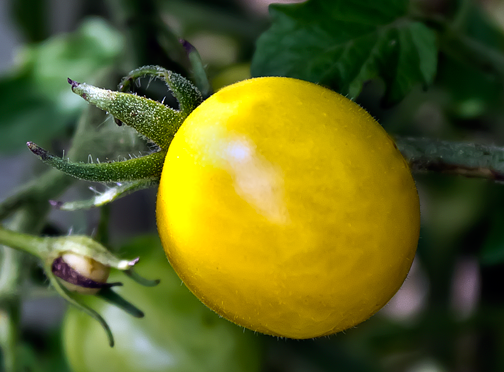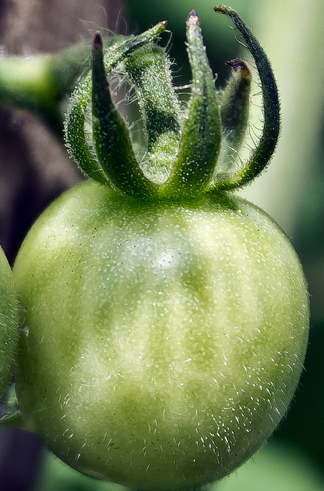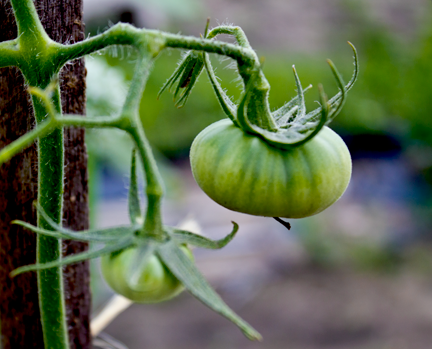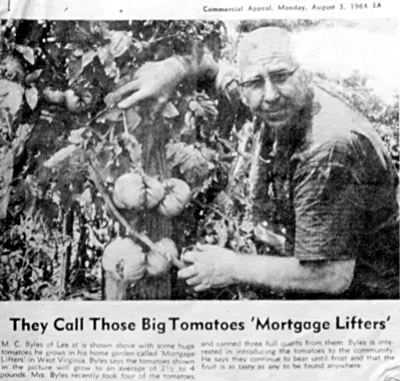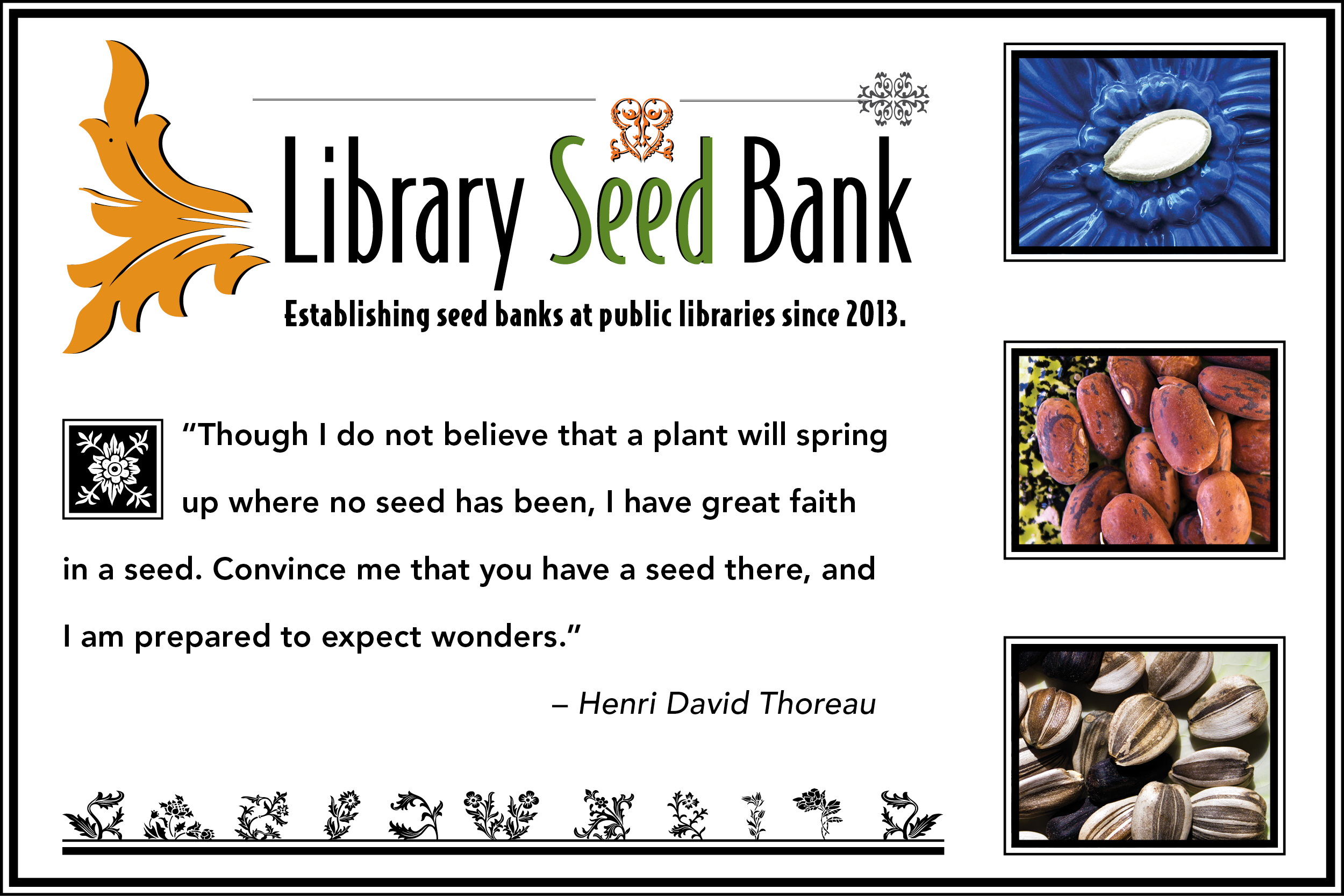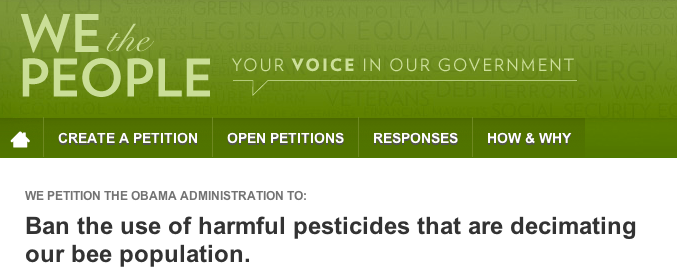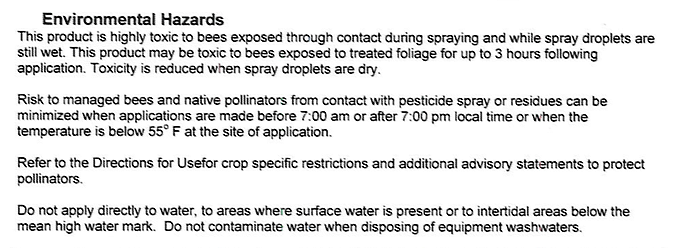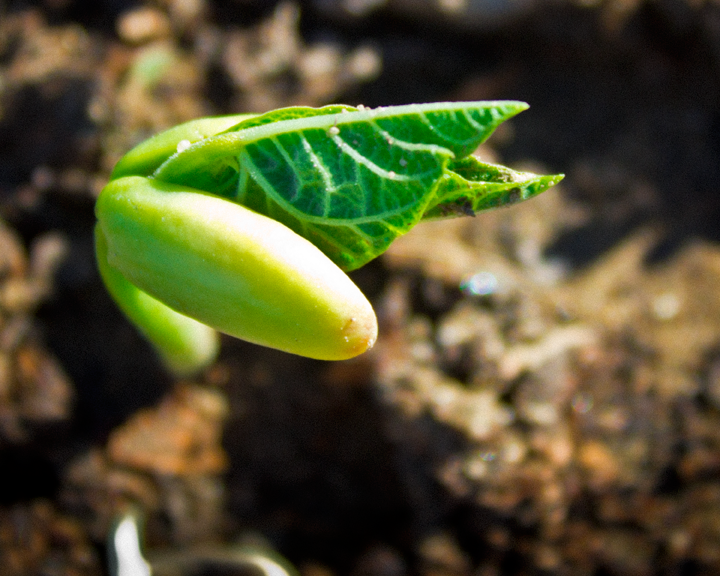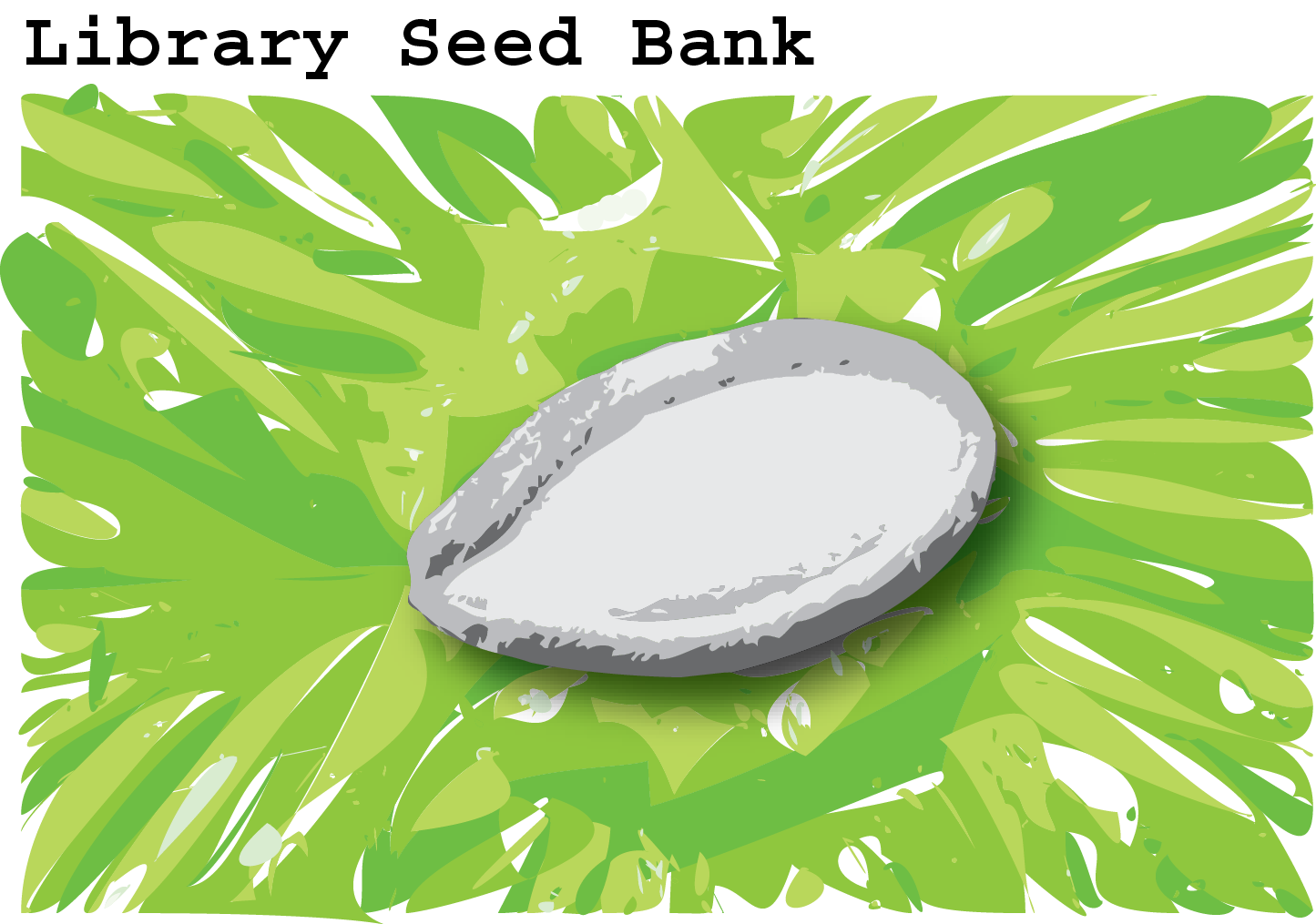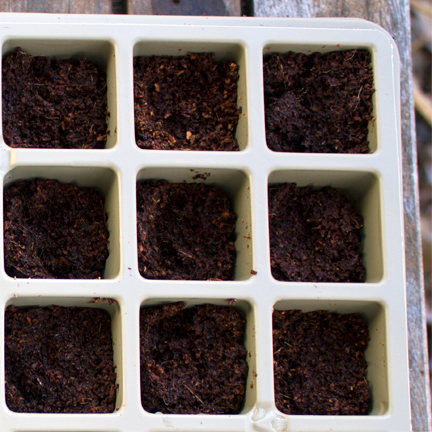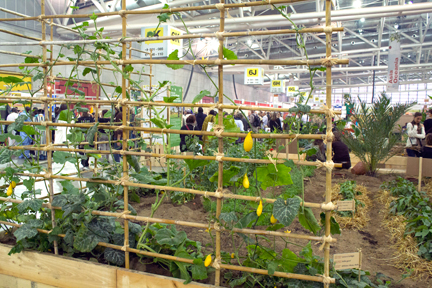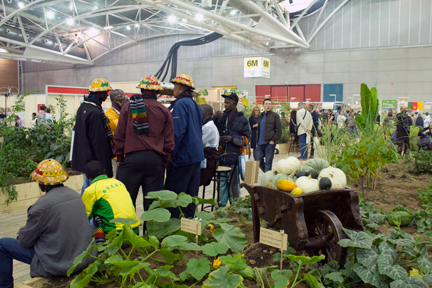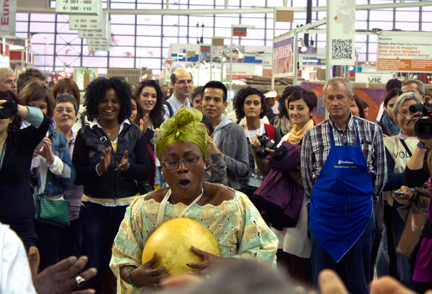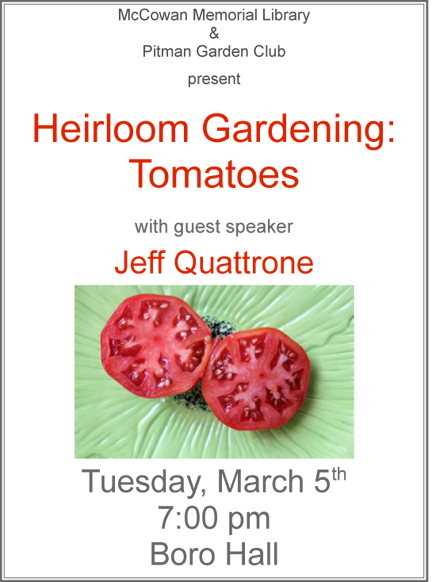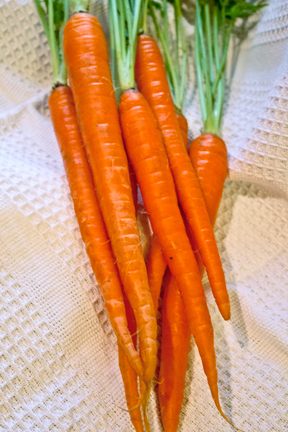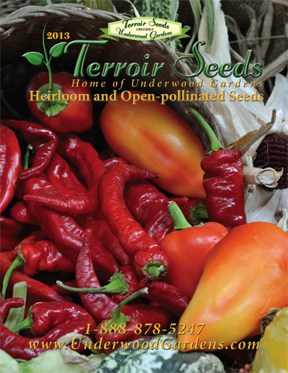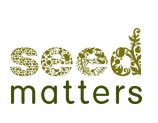 I'm excited, fortunate and grateful to share the recent opportunity to interview Matthew Dillon, Director of www.seedmatters.org. I found out about this initiative by the Clif Bar Family Foundation at The 2nd National Heirloom Expo in September 2012. I'm very impressed with the people I met, and with the goals of this program. Matthew was the Founding Director of the Organic Seed Alliance, an organization I have followed for a number of years. I am a big fan of theirs. They do good work, and I encourage you to support them also.
I'm excited, fortunate and grateful to share the recent opportunity to interview Matthew Dillon, Director of www.seedmatters.org. I found out about this initiative by the Clif Bar Family Foundation at The 2nd National Heirloom Expo in September 2012. I'm very impressed with the people I met, and with the goals of this program. Matthew was the Founding Director of the Organic Seed Alliance, an organization I have followed for a number of years. I am a big fan of theirs. They do good work, and I encourage you to support them also.
I like the core of what seed matters is about. The goals of seed matters are;
Seed Matters we advocate for the improvement and protection of organic seed, which ensures healthy, nutritious and productive crops that benefit people
and planet.
Seed Matters’ goals are threefold:
- Conserve crop genetic diversity
- Promote farmers’ roles and rights as seed innovators and stewards
- Reinvigorate public seed research and education
The relationship of farmers, seeds, public seed research and education is an area that has been co-opted by the push from factory farming, biotechnology and GMOs. Positioning seed matters as an alternative to that existing structure is bold, and demonstrates to me a commitment to leadership. Direct and to the point is sign of clear thinking for a long-term solution, not a fluffy feel good fashionable trend.
So without any further ado, here are the Q&As from my interview.
What motivated you to get involved with seed saving?
In the mid-90s I was farming in Northern California, growing primarily organic vegetables and flowers, and realized that the vast majority of seed we planted was not organic. This struck me as disconnected, and a potential issue with regard to the integrity of organic production systems. Luckily, Sara McCamant (who now works with me on Seed Matters™ Community Seed Toolkits) was the farm manager and a member of Seed Savers Exchange. She saved seed from a number of crops and was well-versed in the issues of concentration in the seed industry. I saw seed conservation as the first step in eventually creating new genetic diversity that would be optimal for organic conditions. I describe it as breeding “the heirlooms of tomorrow.” Working to improve seed systems was what was important to me. I felt we’d lost the knowledge, tools and networks to develop regionally appropriate seed – and this was the issue more than the loss of varieties by name alone. A short four years later I was the Executive Director for Abundant Life Seed Foundation, a nonprofit with 30 years of experience in seed conservation networks. Two years after that I launched Organic Seed Alliance (OSA).
While talking to people, I occasionally get feedback that they're not concerned about organic gardening. In your experience, what difference does organic growing make with seeds?
Seeds are a product of their environment, and they never remain static. Your grandma’s version of Greyhound cabbage was not the same as the version you grow. It may look basically the same, but it is evolving or de-evolving (moving backwards to a less desirable type) with an ever-changing environment of pest, disease and climate pressures. So, the environment is a determinate in how the future variety will perform (look, yield, resist disease and handle adverse conditions). If you continue to select seed in an environment that includes inputs of synthetic fertilizer, herbicides and such, then you will eventually select for a variety that performs at its best only in the presence of these inputs. And in the long run these inputs are not sustainable, certainly not as sustainable as getting fertility from compost or green manure, or using biological and cultural methods to prevent and treat disease and pests.
What are the goals of Seed Matters?
Seed Matters is a very interesting initiative that I am grateful to have the opportunity to be a part of executing. Clif Bar Family Foundation launched it with a recognition that if we are going to transform our farming and food systems to be better for people and the planet, then we have to start with the seed, which is the first critical link in the food and fiber chain. The Foundation’s overarching objective was simple – improve and protect organic seed systems for the public good. They realized this was big work, and they couldn’t do it alone, so they invited others to collaborate, other funders as well as nonprofit and university partners to do the research, education and advocacy work. After examining the key obstacles to improving organic seed systems, we developed three goals:
- Conserve crop genetic diversity
- Promote farmers’ roles and rights as seed innovators and stewards
- Reinvigorate public seed research and education.
Since seed is a living resource, we talk about it as doing “CPR” on seed.
Your work with the Organic Seed Alliance was impressive to me, and I see you're working with them on the Farmer Seed Initiative. Can you please tell me about that program?
One of the goals of Seed Matters is to promote farmers’ roles and rights as seed innovators and stewards. If you look at the last 10,000 years of agricultural innovation, farmers have been the prime drivers. For example, there was no production of alfalfa for dairy cattle in the upper Midwest until a farmer named Wendelin Grimm began selecting North America’s first winter hardy alfalfa in the 1850s in Minnesota. There are thousands of anonymous examples for every situation where we actually know by name, place and crop. In the last 100 years farmers have increasingly disengaged from seed work. A number of factors are at play. The advent of hybrid seed is part of it, as is the rise of utility patents that prevent seed saving. But there were also social and economic changes in farming itself that encouraged farmers to be dependent on outside inputs – fertility, disease and pest management and seed. Many farmers are realizing that the more they can be self-sufficient in their inputs, the more resiliency their farms have both ecologically and economically. But they need support – both in re-learning the skills necessary to innovate and in advocating for their ability to engage as seed stewards. OSA does a great job of strengthening farmers’ seed skills – seed production as well as improving crops through basic breeding – and they have a strong advocacy program working to increase funding for participatory plant breeding, protecting farmers from transgenic contamination and working to stop the trend towards intellectual property practices that restrict seed saving. The Farmer Seed Stewardship Initiative is designed to promote and propagate a new generation of farmer seed stewards. The program has both an educational component of training farmers in seed skills and advocating with them as allies. It’s important for farmers to identify themselves as seed innovators so that OSA can leverage their collective voice on state and national issues.
I'm very excited by the Community Seed Kits, and the intent to grow them into local seed libraries. I grew up around a farming community, and a local supply company had a seed room. On three walls in the room there were drawers like card catalogues, and on the front of the drawers, seed packets. There were barrels of onion and potato sets, scales at the counter, along with farmers trading stories. I was very fortunate to experience this. What are your thoughts about the seed kits, and why local seed libraries are important? Do you see these libraries as a potential national network?
I just returned from the Midwest and met a young man who wants to build and network public libraries across state lines to be seed libraries, and to create a database and link their collections along the lines of an interlibrary book loan program. So I see great potential for the future of local seed libraries and other forms of local seed exchanges. It’s more than just libraries – it can be collaborations of school gardens, community gardens and individuals collectively curating a local collection in the field. The community seed movement is just beginning to emerge, and I expect to see a diversity of forms with a shared goal of creating local seed resiliency. It’s great to see people getting active in creating positive change, in determining their own seed futures and building community while they do it. We play a small role in that with our kits and our educational resources, but are glad to be a supportive player. Community Seed Kits.
There are educational grants available, and the grant to Frank Kutka is very interesting. Can you please elaborate about that?
We’re really pleased to be supporting Frank through a Seed Matters grant. He is breeding organic field corn that will reject pollen from transgenic (GMO) crops. The trait is called “gametophytic incompatibility” – plants that have it reject pollen from other plants that are dissimilar to it. It’s an imperfect system – sometimes cross-pollination occurs – but it can help reduce contamination of organic corn from GMO corn. It’s a naturally occurring trait that is being bred using classical field breeding. Frank is sharing his breeding populations with other researchers, and collectively they hope to improve the trait to be more effective in its ability to block cross contamination.
What are your thoughts on GMOs?
I think they are a temporary technology that will eventually be shown to not produce an adequate, safe or sustainable return on investment. Years from now we will wonder at how much money our federal and private breeding programs threw at them. For the billions that have been spent, we have seen only two traits – RoundUp Resistance and Bt – and both of them are breaking down and failing in the field. Put the allergenic and health concerns people have about these aside for a moment, the simple truth is they simply aren’t working in the field anymore. They haven’t proved more sustainable, and they will be replaced with traits that are even less sustainable. Just because we create a tool doesn’t mean it is a good tool, or that we have to use it. What the private sector loved about this tool is they could commodify it (with patents) and package it with herbicides, and in the short term make a whole lot of money. The companies that were successful are now turning to patenting natural traits since they see their biotech traits are short-lived. It’s this move towards patenting natural traits – traits we want in organics – that we really need to be concerned about.
As a blogger, what can I do to help you?
This interview is nice. It’s an honor. Thank you. Seed Matters certainly appreciates you sharing our success stories, upcoming campaigns and other information with your readership. We look for guest bloggers too – so if you have a story idea you want to share on our blog – The Seed Commons – let us know.
What's your favorite heirloom tomato?
Well, as someone who has spent the last 15 years in the cool damp Pacific Northwest, I have almost stopped growing tomatoes due to the difficulty in getting good fruit maturity and the prevalence of late blight. The hybrid Sun Gold did well up there, but as a seed saver I wanted an open-pollinated variety that I could save. Luckily my friend John Navazio, who co-founded OSA with me, started a breeding project making selections out of Sun Gold. My favorite tomato is really that breeding population. Sorry, an experimental population - not an heirloom - at least not yet, but I am confident that when John is finished it will be an heirloom of tomorrow.
Thank you Matthew for taking the time to provide such thoughtful and inspiring answers. I hope you are inspired to get involved with seed matters, because seeds, do matter.






